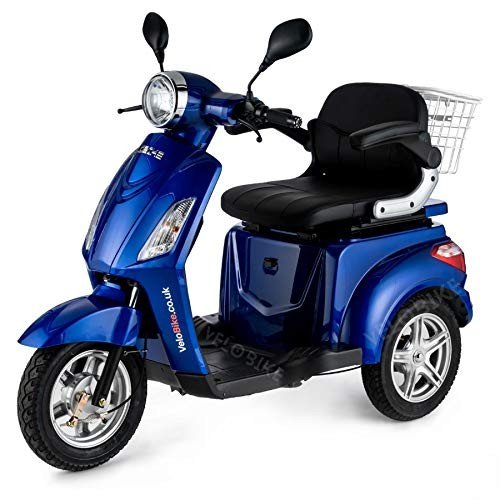Mobility Scooters: A Comprehensive Guide
Mobility scooters have actually ended up being a necessary mode of transportation for many people dealing with mobility difficulties. Kim Arties out the different facets of mobility scooters, including their types, advantages, features, and a guide for prospective buyers.
Comprehending Mobility Scooters
Mobility scooters are electrically powered devices developed for people with restricted mobility. They offer a way of transport for people who may have trouble walking but still wish to maintain their independence. They can be found in various designs and functions to accommodate a vast array of needs.
Kinds Of Mobility Scooters
Mobility scooters can normally be categorized into three main types:
| Type | Description | Best For |
|---|---|---|
| Compact Scooters | These are small and lightweight, ideal for inside and short trips. | Users with minimal storage area or those who take a trip often. |
| Mid-size Scooters | A balance in between mobility and stability, suitable for both indoor and outside use. | Those who require to cover a variety of terrains. |
| Durable Scooters | Large and robust, developed for rugged outdoor use and much heavier people. | Users requiring additional weight capacity or going off-road. |
Secret Features of Mobility Scooters
The option of mobility scooter frequently depends upon the functions that line up with private needs. Here are some of the essential functions to think about:
- Weight Capacity: Mobility scooters include different weight limitations. It is vital to select a scooter that can effectively support the user's weight.
- Variety: The distance a scooter can travel on a single charge varies. Depending on user requirements, one might go with scooters with a variety of as much as 40 miles.
- Speed: Most mobility scooters can reach speeds between 4 to 8 miles per hour. Consider what speed is comfy and safe for the desired environment.
- Turning Radius: A compact turning radius is essential for indoor usage, enabling for easier navigation in tight spaces.
- Battery Type: The kind of batteries used can impact the scooter's performance. Lead-acid and lithium-ion batteries are the most typical.
Benefits of Using Mobility Scooters
The benefits of mobility scooters extend beyond simply transportation. Some key benefits include:
- Independence: Users can browse their environment without depending on caretakers, promoting independence and self-esteem.
- Health Benefits: Using a scooter can encourage outside activity, leading to physical and mental health enhancements by decreasing sensations of isolation.
- Convenience: Scooters can quickly be run in numerous environments, whether indoors, in shopping center, or outdoors.
Important Considerations When Buying a Mobility Scooter
When buying a mobility scooter, several considerations can help guarantee that you pick the right design:
Assess Individual Needs:
- Mobility level: Consider how much assistance the person will require.
- Variety of use: Determine where the scooter will primarily be utilized (indoors, outdoors, on rough surfaces, and so on).
Test Drive:
- Always test drive numerous models to discover an ideal fit. Pay attention to convenience, ease of steering, and the scooter's responsiveness.
Review Safety Features:
- Look for scooters with appropriate security functions like lights, indicators, and anti-tip designs.
Inspect Warranty and Service Options:
- A reputable guarantee and available service choices are vital for long-term use.
Frequently Asked Questions about Mobility Scooters
1. How fast do mobility scooters go?Mobility scooters typically have speeds ranging from 4 to 8 miles per hour, with a lot of created for security instead of high-speed travel. 2. Are there weight constraints on mobility scooters?Yes, mobility
scooters feature particular weight limitations, frequently varying from
250 pounds to over 500 lbs, depending upon the design. 3. Can mobility scooters be used indoors?Certain models, particularly compact scooters, are specifically created for
indoor usage and are simpler to steer in tight areas. 4. How typically do the batteries need to be replaced?Battery life can differ based upon usage, however normally, with appropriate care, batteries might last between 1 to 3 years before requiring replacement
. 5. Are mobility scooters covered by insurance?Coverage can differ, however some insurance coverage plans, including Medicare and Medicaid, might cover part of the expense. It's advised to talk to specific insurance coverage service providers. Mobility scooters serve as a
important tool for numerous people, enabling them to keep
their freedom and independence. By understanding the various types and functions of mobility scooters, individuals can make educated choices tailored to their particular needs.
Whether utilized for errands, interacting socially, or leisurely activities, mobility scooters can boost the quality of life for those with mobility constraints. Investing in a mobility scooter is a decision that can significantly impact an individual's everyday life. For that reason, people must thoroughly evaluate their choices and choose a design that best lines up with their way of life and mobility requirements
.

